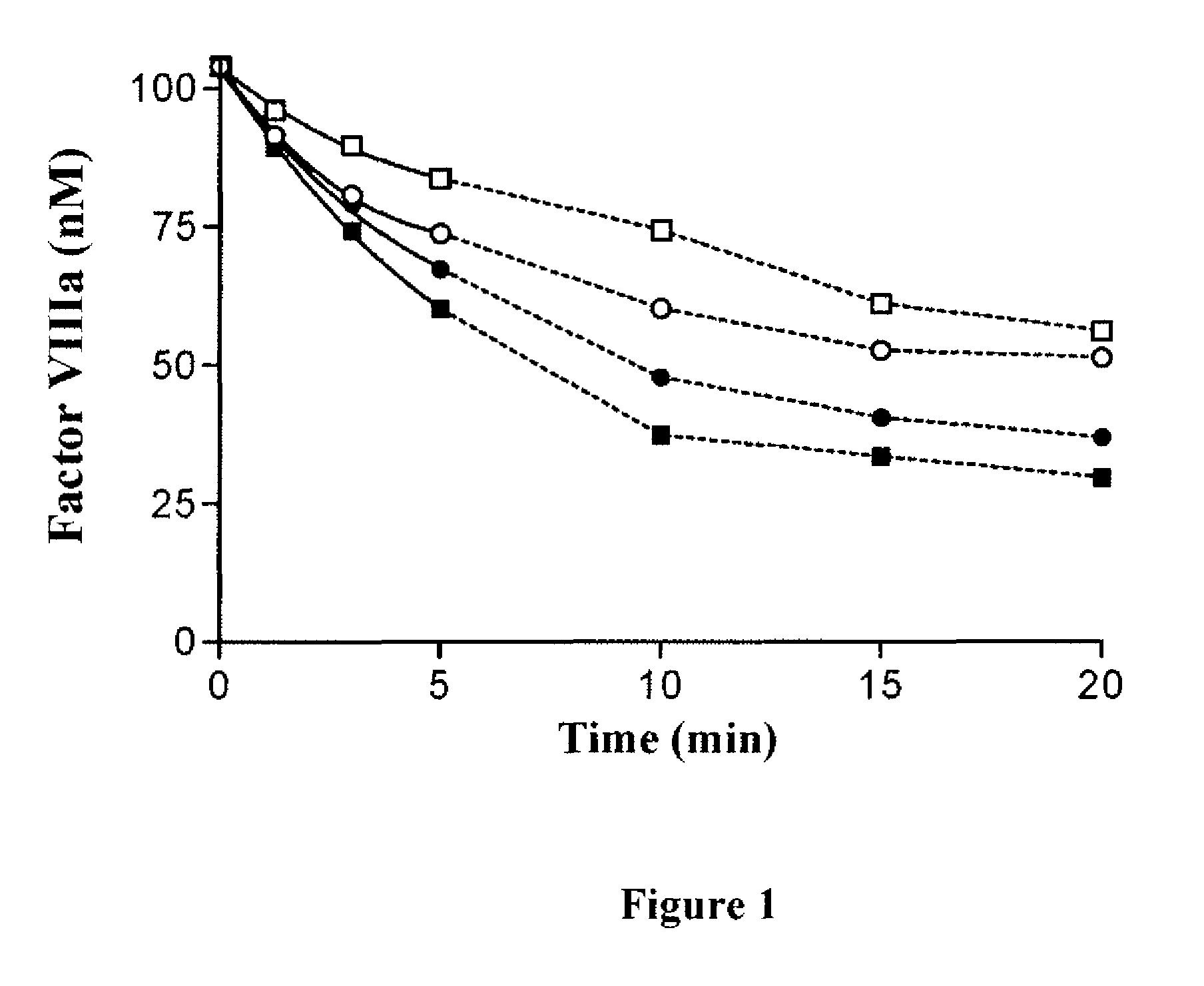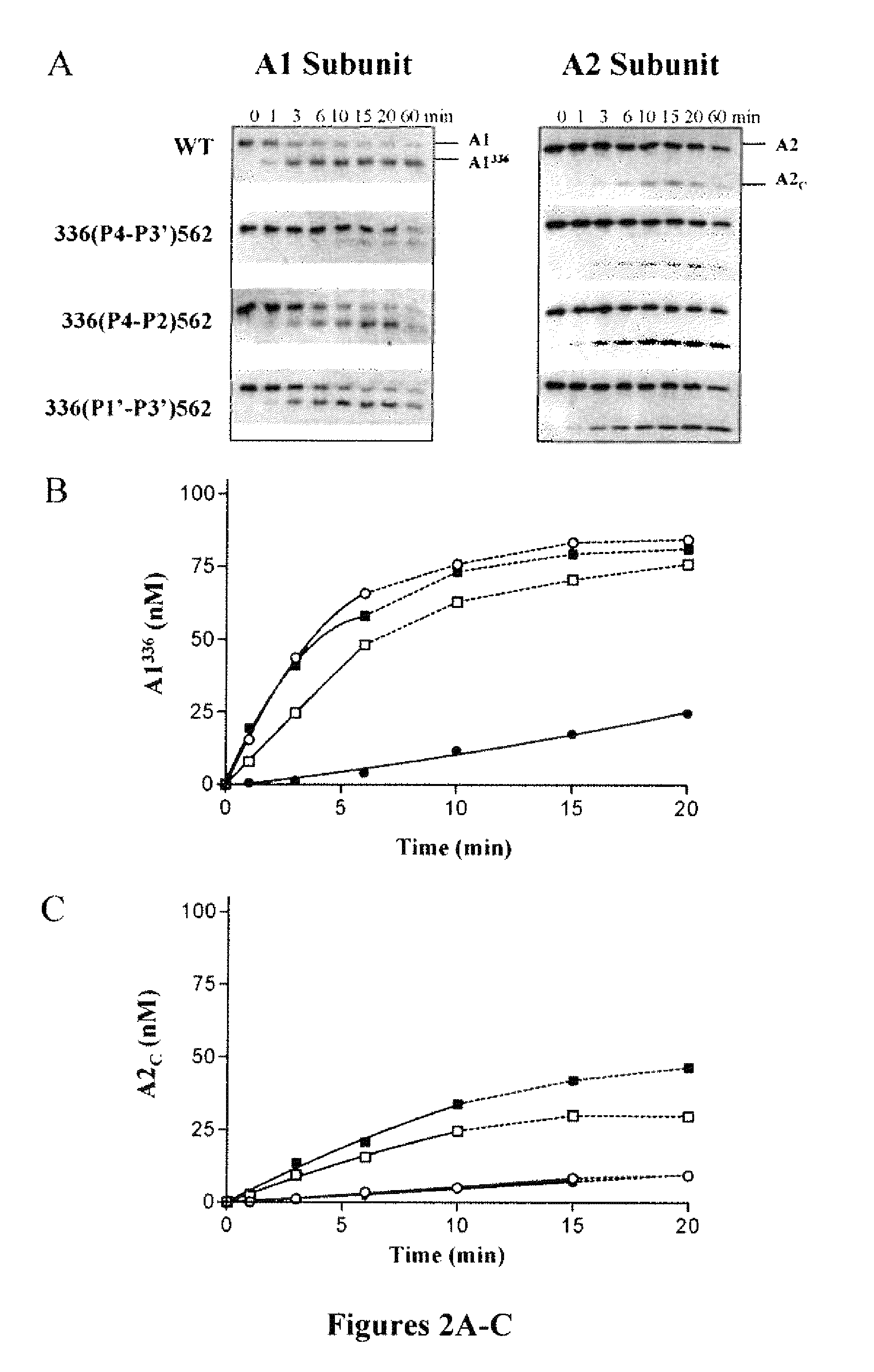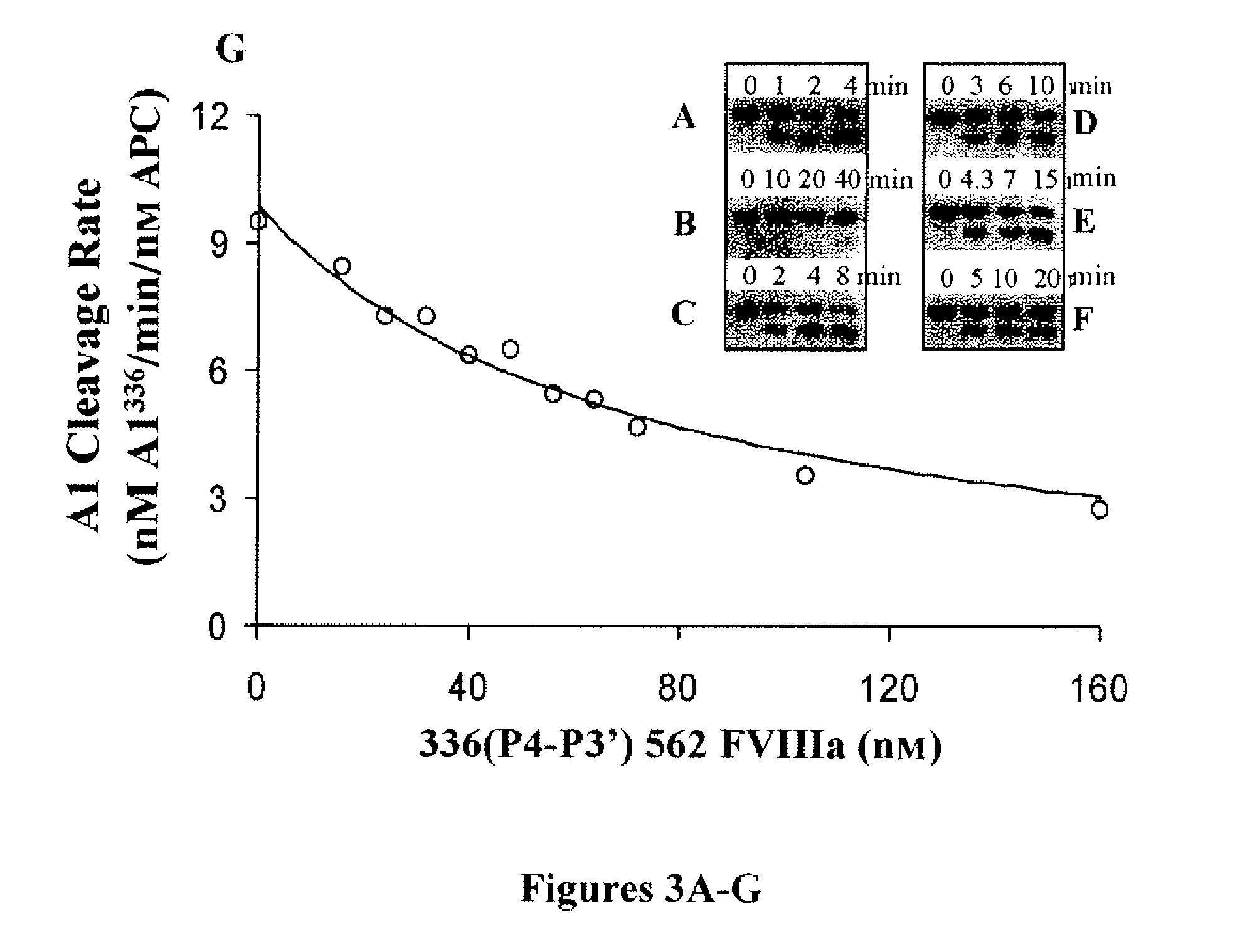Recombinant factor VIII having reduced inactivation by activated protein C
a technology of activated protein and recombinant factor, which is applied in the direction of peptides, drug compositions, tissue culture, etc., can solve the problem of substrates not being able to correctly dock, and achieve the effect of effective blood clotting
- Summary
- Abstract
- Description
- Claims
- Application Information
AI Technical Summary
Benefits of technology
Problems solved by technology
Method used
Image
Examples
example 1
Characterization of Recombinant Factor VIII 336(P4-P3′)562 and 562(P4-P3′)336 Mutants
[0107]It was recently demonstrated that APC-catalyzed cleavages of factor VIIIa at residues Arg336 and Arg562 occur independently with the rate of proteolysis at the former site ˜25-fold faster than the latter (Varfaj et al., “Role of P1 Residues Arg336 and Arg562 in the Activated-Protein-C-catalysed Inactivation of Factor VIIIa,”Biochem. J. 396:355-362 (2006), which is hereby incorporated by reference in its entirety). While substantial evidence implicates the involvement of exosite-directed interactions in the catalytic mechanism of APC, another factor that may contribute to the disparate reaction rates is the influence of residues surrounding the two P1 Arg residues. To examine the roles of these sequences in cofactor cleavage and inactivation, several recombinant B-domainless factor VIII mutants were prepared by replacing the P4-P3′ sequence surrounding the faster-reacting Arg336 site with that ...
example 2
Inactivation of 336(P4-P3′)562 Factor VIIIa Mutants by APC
[0110]Purified factor VIII variants (130 nM) were converted to the active factor VIIIa cofactor following thrombin activation. The resultant factor VIIIa was then reacted with indicated levels of APC in the presence of phospholipid vesicles (100 μM) and cofactor activity was monitored over time using a factor Xa generation assay (FIG. 1). Significantly greater concentrations of APC were employed for inactivation experiments involving the mutant factor VIII forms (40 nM APC) compared to that used for WT factor VIIIa (2 nM APC) based upon reduced reactivity for the variants.
[0111]The observed rate of spontaneous loss of factor VIIIa activity obtained in the absence of APC was similar for all three 336(P4-P3′)562 variants and WT factor VIIIa forms (˜10% activity loss at 20 min) and all data obtained in the presence of APC were corrected for the contribution of inactivation due to this APC-independent mechanism as described in ab...
example 3
APC Cleavage of A1 and A2 Subunits of 336(P4-P3′)562 Factor VIIIa Mutants
[0114]The above results indicated reduced rates of APC-catalyzed inactivation of the factor VIIIa forms possessing mutations surrounding Arg336. Western blot analysis was performed to determine the rates of APC-catalyzed proteolysis at Arg336 and Arg562 for the 336(P4-P3′)562, 336(P4-P2)562 and 336(P1′-P3′)562 factor VIIIa variants and correlate these data to rates for factor VIIIa inactivation (FIG. 2). Cleavage at Arg336 within the factor VIIIa A1 subunit and generation of the A1336 product (residues 1-336) were detected by monoclonal antibody 58.12, which recognizes the N-terminus of this subunit. Cleavage at Arg562 within the A2 subunit and generation of the A2C product (residues 563-740) were detected by monoclonal antibody R8B12, which recognizes a discontinuous epitope within the factor VIII A2 domain (Ansong et al., “Epitope Mapping Factor VIII A2 Domain by Affinity-directed Mass Spectrometry: Residues ...
PUM
| Property | Measurement | Unit |
|---|---|---|
| time | aaaaa | aaaaa |
| time | aaaaa | aaaaa |
| time | aaaaa | aaaaa |
Abstract
Description
Claims
Application Information
 Login to View More
Login to View More - R&D
- Intellectual Property
- Life Sciences
- Materials
- Tech Scout
- Unparalleled Data Quality
- Higher Quality Content
- 60% Fewer Hallucinations
Browse by: Latest US Patents, China's latest patents, Technical Efficacy Thesaurus, Application Domain, Technology Topic, Popular Technical Reports.
© 2025 PatSnap. All rights reserved.Legal|Privacy policy|Modern Slavery Act Transparency Statement|Sitemap|About US| Contact US: help@patsnap.com



